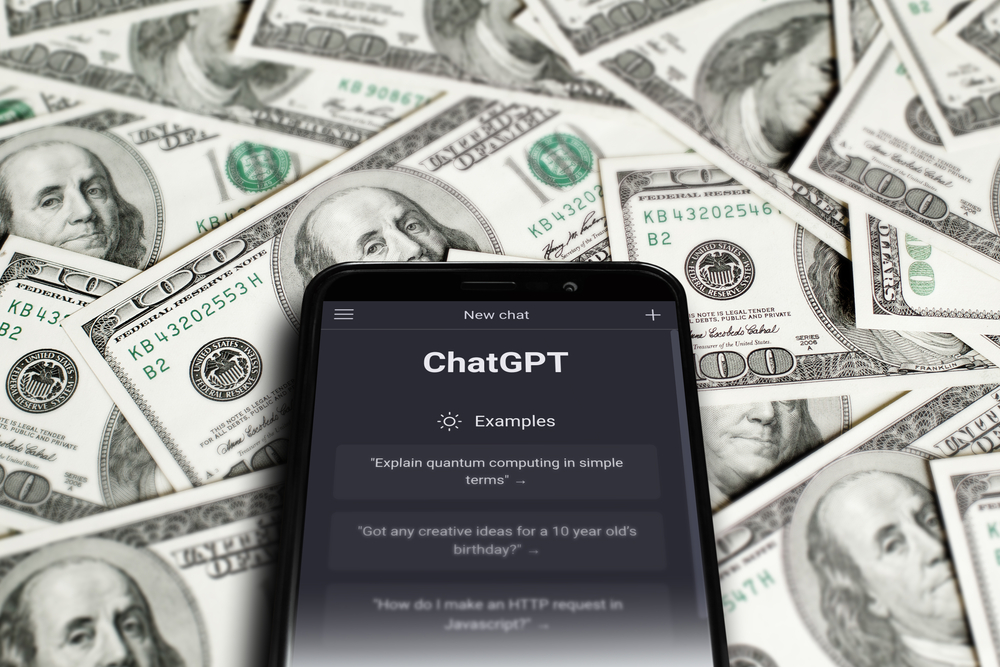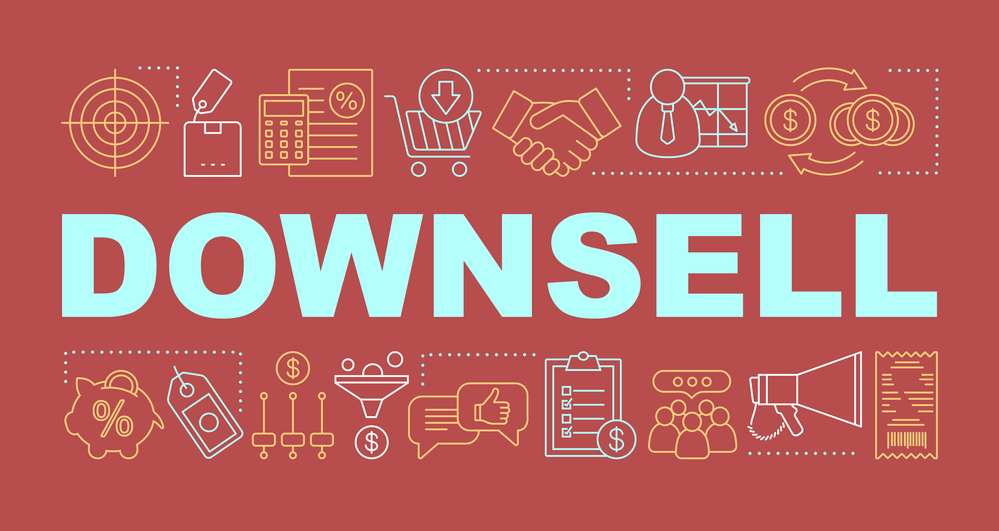
How to Leverage ChatGPT for Your Entrepreneurial Journey in 6 Steps
May 22, 2023
If you’re reading this, you’re likely an entrepreneur navigating the thrilling, sometimes puzzling world of ecommerce. And in this digital age, it’s crucial to stay abreast of the latest tools that can give your business model an edge.
Today, let’s dive into a game-changing tool that’s as futuristic as it sounds: OpenAI’s (and Microsoft’s) ChatGPT.
It’s like having a super-smart, endlessly creative, and (almost) tirelessly working partner on your team. This AI powerhouse is capable of understanding context, generating human-like text, and providing valuable outputs for various tasks.
But what does this have to do with your entrepreneurial journey, you might ask? The answer is – everything!
Whether you’re brainstorming a punchy name for your startup, structuring a solid business plan, devising a dynamic marketing strategy, or even organizing finances, ChatGPT can be an invaluable asset.
Step 1: Choosing a Business Name with ChatGPT
Have you ever found yourself in a brainstorming session, attempting to conjure up the perfect business name, only to feel like you’re chasing elusive lightning in a bottle?
Welcome to the club. Choosing a name for your startup isn’t just a fun exercise—it’s a critical step in your entrepreneurial journey. Your business name can set the tone for your brand, make a powerful first impression, and play a part in a customer’s decision to engage with you.
Now, imagine having a brainstorming partner that never tires and never runs out of ideas. That’s ChatGPT for you!
For entrepreneurs who want to use ChatGPT (GPT = generative pre-trained transformer), you can generate a list of potential business names based on your industry, brand values, target audience, and other key factors. You just need to input some parameters and let ChatGPT’s creativity run wild.
But it’s not just about the quantity of options. ChatGPT can help you think outside the box, providing suggestions that you might not have considered. It can challenge your assumptions, pushing you towards more unique and compelling business names.
Remember, though, ChatGPT is a tool, and like all tools, it works best when guided by a skilled hand. It’s up to you to take these suggestions, consider them in light of your unique business context, and choose the one that truly resonates with your vision.
Step 2: Using ChatGPT for Market Research
Market research is the compass that guides your entrepreneurial ship. It’s what tells you about your customers, competitors, industry trends, and the opportunities and challenges that lie ahead. But let’s be real—it can also be a time-consuming and complex process. That’s where ChatGPT comes in.
ChatGPT can’t replace comprehensive market research tools or professional analysts, but it can be a powerful assistant in your research endeavors. For instance, it can help digest and summarize large volumes of text-based data, such as customer reviews, social media comments, or industry reports, providing you with clear, digestible summaries.
Suppose you’ve gathered a pile of customer reviews for a competitor’s product and want to understand what people love and hate about it. You could manually read through all of them (and spend a considerable amount of time doing so), or you could ask ChatGPT to summarize the key points for you. The artificial intelligence might report back something like,
“Customers appreciate the product’s user-friendly design and responsive customer service but frequently mention that it’s overpriced and lacks robust features.”
This can save you time and provide valuable insights into what your potential customers value.
Furthermore, ChatGPT can help generate questions for customer interviews or surveys. Let’s say you’re planning to interview customers about their experience with your online store. You can ask ChatGPT to generate a list of questions based on your objectives, and it’ll give you a tailored list, ensuring you cover all necessary aspects.
Saturated industry? A payment ecosystem upgrade can help
Step 3: Building a Business Plan with ChatGPT
Writing a business plan can sometimes feel like you’re trying to assemble a puzzle without the box image. It’s not impossible, but it sure feels that way. A well-crafted business plan can guide your business’s growth and attract investors. ChatGPT can help make this daunting task more manageable.
ChatGPT is an excellent tool for structuring your business plan. It can help outline the key sections that should be included, such as the executive summary, company description, market analysis, organization structure, product line or services description, marketing and sales strategy, and financial projections.
Moreover, ChatGPT can assist in drafting these sections. For instance, if you’re struggling with the executive summary, you could provide ChatGPT with a brief description of your business, its mission, target market, and your future plans. The AI can then help generate a concise and compelling summary.
Similarly, when crafting your marketing and sales strategy, ChatGPT can generate ideas for unique selling propositions, potential marketing channels, and sales strategies based on your inputs. All you need to do is guide it with your specific goals and constraints.
Let’s not forget about the financial section—one of the most challenging parts of any business plan. While ChatGPT can’t replace a professional financial analyst, it can help you outline what financial information you need to include, such as profit and loss forecast, cash flow statement, and balance sheet.
A word of caution, though—ChatGPT is an AI, and while it’s a powerful tool, it doesn’t have business experience or intuition. It’s important to work with human experts—like mentors, advisors, or experienced entrepreneurs—to review and refine your business plan. Think of ChatGPT as your AI assistant, not your AI CEO.
So, ready to roll up your sleeves and draft that killer business plan with ChatGPT?
Step 4: Creating a Marketing Strategy with ChatGPT
“Build it, and they will come” might work in movies, but in the real world of business, a solid marketing strategy is vital. It’s the roadmap that guides you in reaching your target audience and convincing them to buy your products or services. But where to start? This is where ChatGPT shines.
ChatGPT can be a fantastic brainstorming partner for marketing ideas. Whether you’re trying to figure out the best channels to reach your audience, creative campaigns to grab their attention, or compelling messages to convert them into customers, ChatGPT can provide suggestions. Just feed it with some basic information about your business, your goals, and your audience, and watch as it churns out ideas.
ChatGPT can also help you generate engaging marketing content. Need a catchy headline for your next blog post? Or a compelling product description that highlights the unique features of your new offering? ChatGPT can assist with these tasks, saving you time and providing creative inspiration.
Don’t forget that marketing is a data-driven field, too. While ChatGPT can’t perform complex data analysis, it can help you make sense of marketing data. For instance, if you have a list of customer feedback about your latest marketing campaign, you could ask ChatGPT to summarize the key themes.
Strong marketing strategy but few sales? We can help!
Step 5: Financial Forecasting with ChatGPT
Navigating the financial side of a business is often akin to steering a ship through foggy waters. Financial forecasting, in particular, can be tricky. It involves predicting future revenue, expenses, and cash flow to guide business decisions and attract investors. While ChatGPT isn’t a financial advisor, it can help simplify some aspects of this process.
One area where ChatGPT can assist is in structuring your financial forecasts. It can provide a checklist of all the components that need to be included in a comprehensive financial forecast, such as projected income statement, cash flow statement, and balance sheet. It can also guide you on the various factors to consider when making these projections, like market trends, business growth rates, and cost factors.
If you’re new to financial forecasting, ChatGPT can help explain financial concepts in plain language, acting as a sort of AI tutor. Confused about the difference between gross margin and net margin? Not sure what a capital expenditure is? ChatGPT can help clarify these terms and more.
Moreover, ChatGPT can assist in drafting financial reports. Given the necessary data, it can help generate clear, concise summaries of financial performance, trends, and key metrics.
However, it’s crucial to remember that ChatGPT doesn’t have financial expertise. It can’t analyze financial data, provide financial advice, or make accurate financial forecasts. It’s essential to work with a financial professional when dealing with complex financial planning and decisions.
Using ChatGPT can make the financial side of your business less daunting, but it’s not a replacement for sound financial advice and analysis. Consider it your financial first mate, not your financial captain.
Step 6: Using ChatGPT for Customer Support as a Chatbot
When it comes to customer service, responsiveness and availability are key. But as an entrepreneur, you can’t be on standby 24/7 to answer customer queries. That’s where ChatGPT can play an invaluable role in your customer support strategy.
ChatGPT can be used to create a chatbot that handles routine customer inquiries on your website, social media platforms, or even within your product. These chatbots can provide instant responses, enhancing customer satisfaction and freeing up your human customer support team to tackle more complex issues.
ChatGPT-powered chatbots are capable of answering a range of queries, all powered by its large language model. What sets ChatGPT apart is its ability to understand context and provide more natural, human-like responses compared to traditional chatbots. And depending on your budget, you can choose a version that sounds even more human-like: GPT-3, GPT-3.5, or GPT-4. But no matter which you choose, ChatGPT uses natural language processing, so it can handle any customer question thrown at it.
Moreover, ChatGPT can help manage customer expectations when human intervention is needed. It can create a ticket, inform the customer about the estimated response time, and even escalate the issue based on predefined rules.
Training a ChatGPT’s generative AI chatbot doesn’t require extensive programming skills. You can guide its responses by providing examples of the kind of inquiries it will encounter and how you want it to respond—essentially, response automation. Over time, with feedback and fine-tuning, your chatbot can become an integral part of your customer support, improving customer satisfaction and loyalty.
However, remember that while a ChatGPT-powered chatbot can handle a range of inquiries, it’s not a replacement for human support. Complex issues and sensitive situations require human empathy and judgement. Use your ChatGPT chatbot as a first line of support, but ensure that there’s a seamless handover process to human support when needed.
The Final Step to Running a Successful ChatGPT-based Business
And there you have it, future business moguls! We’ve explored how ChatGPT can assist you at various stages of your entrepreneurial journey, from choosing a business name to financial forecasting. It’s clear that this AI tool can be a valuable asset, providing creative input, structured guidance, and even a dash of inspiration when you need it most.
As an addition point of value, new features will surely be added to ChatGPT, whether via partnerships or new technology breakthroughs, machine learning, and updates to the AI language model/datasets, which will increase the number of use cases and power in your business ecosystem.
This guide also ignores the more obvious use case of search engine optimization with content creation.
But remember, while ChatGPT can be a game-changer, running a successful business requires more than a fantastic AI tool. It requires sound financial management, and that includes having a reliable and secure merchant account to process customer payments, especially if you’re operating in a high-risk industry.
That’s where DirectPayNet comes in. We specialize in high-risk merchant accounts, providing businesses with secure, reliable payment processing solutions. We understand the unique challenges high-risk businesses face and offer tailored solutions to meet your specific needs. So why not bolster your entrepreneurial toolkit even further by opening a high-risk merchant account with DirectPayNet?
PROTECT YOUR BUSINESS BY OPENING A HIGH-RISK MERCHANT ACCOUNT TODAY




